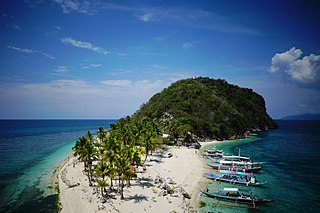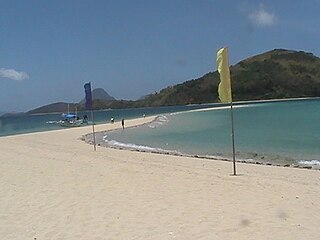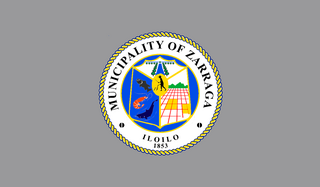
Buenavista, officially the Municipality of Buenavista, is a 2nd class municipality and the largest settlement in the province of Guimaras, Philippines. According to the 2020 census, it has a population of 52,899 people.

Binalbagan, officially the Municipality of Binalbagan, is a 1st class municipality in the province of Negros Occidental, Philippines. According to the 2020 census, it has a population of 71,407 people.

La Carlota, officially the City of La Carlota,, is a 4th class component city in the province of Negros Occidental, Philippines. According to the 2020 census, it has a population of 66,664 people. making it the least populous city in the province.

Talisay, officially the City of Talisay, is a 4th class component city in the province of Negros Occidental, Philippines. According to the 2020 census, it has a population of 108,909 people.

Arteche, officially the Municipality of Arteche, is a 3rd class municipality in the province of Eastern Samar, Philippines. According to the 2020 census, it has a population of 16,360 people.

Ajuy, officially the Municipality of Ajuy, is a 2nd class municipality in the province of Iloilo, Philippines. According to the 2020 census, it has a population of 53,462 people.

Barotac Viejo, officially the Municipality of Barotac Viejo, is a 3rd class municipality in the province of Iloilo, Philippines. According to the 2020 census, it has a population of 48,614 people.

Batad, officially the Municipality of Batad, is a 5th class municipality in the province of Iloilo, Philippines. According to the 2020 census, it has a population of 22,157 people.

Calinog, officially the Municipality of Calinog, is a 1st class municipality in the province of Iloilo, Philippines. According to the 2020 census, it has a population of 62,853 people.

Carles, officially the Municipality of Carles, is a 2nd class municipality in the province of Iloilo, Philippines. According to the 2020 census, it has a population of 72,637 people.

Concepcion, officially the Municipality of Concepcion, is a 3rd class municipality in the province of Iloilo, Philippines. According to the 2020 census, it has a population of 44,633 people.

Dueñas, officially the Municipality of Dueñas, is a 4th class municipality in the province of Iloilo, Philippines. According to the 2020 census, it has a population of 34,597 people.

Mina, officially the Municipality of Mina, is a 5th class municipality in the province of Iloilo, Philippines. According to the 2020 census, it has a population of 24,042 people.

New Lucena, officially the Municipality of New Lucena, is a 4th class municipality in the province of Iloilo, Philippines. According to the 2020 census, it has a population of 24,314 people.

Oton, officially the Municipality of Oton, is a 1st class municipality in the province of Iloilo, Philippines. According to the 2020 census, it has a population of 98,509 people making it as the most populous town in the province and the entire Panay island.

San Dionisio, officially the Municipality of San Dionisio, is a 4th class municipality in the province of Iloilo, Philippines. According to the 2020 census, it has a population of 39,048 people.

San Rafael, officially the Municipality of San Rafael, is a 5th class municipality in the province of Iloilo, Philippines. According to the 2020 census, it has a population of 17,795 people.

San Miguel, officially the Municipality of San Miguel, is a 4th class municipality in the province of Iloilo, Philippines. According to the 2020 census, it has a population of 30,115 people.

Zarraga, officially the Municipality of Zarraga, is a 4th class municipality in the province of Iloilo, Philippines. According to the 2020 census, it has a population of 27,305 people.

The Northern Iloilo State University (NISU) is a state university in the Philippines. It is mandated to provide higher and advanced education and training in the fields of education, industrial technology, criminology, agriculture, fishery, hospitality management, engineering, sciences and information technology. It is also mandated to promote research, advanced studies, and progressive leadership in various fields. Its main campus is located in Estancia, Iloilo, Philippines. Prior to its present conversion as a university, it was called Northern Iloilo Polytechnic State College. It was elevated to a university in 2022, through Republic Act No. 10597 as amended by Republic Act 11005, and upon confirmation by the Commission on Higher Education En Banc Resolution no. 222-2022 dated April 26, 2022.

























